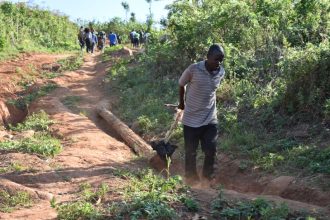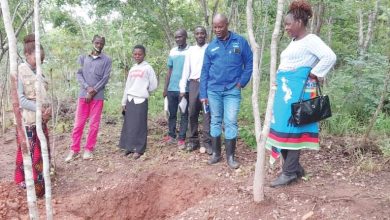Science and technology for agriculture transformation
Innovate or perish. No innovation, no transformation to Malawi agriculture, writes TAMANI NKHONO-MVULA in this second part of this three-part series on agriculture transformation.
Today, Malawi’s agriculture is being faced with numerous challenges, which by extension are threatening the very existence and fabric of society as food security is the strongest cord that determines morality, security and the wholeness of human being. It is said that food keeps the soul and body together.
Hunger makes people to migrate; hunger makes people to revolt and at times it makes them to lose the sense of morality and humanity. With the challenges of climate change, which are threatening agriculture production and productivity and at the same time an ever-increasing population, the urgency to find viable and alternative means to produce food must be felt and appreciated more than ever.
Malawi population is projected to grow to 43 million in the next 30 years, this means that Malawi will need to produce at least 10 million metric tonnes (MT) of maize (or its equivalent) per year to feed that population than is the case at the moment where the requirement is around 3.5 million MT.
With land being a constant factor, what therefore needs to increase is the productivity per unit area than is the case at the moment. The crusade about agriculture transformation is, therefore timely, warranted and needs to be gives the seriousness it deserves.
We will not be able to feed this growing population in the face of a changing climate with the technologies that are currently failing us. The days of manna from heaven are long gone, therefore, Malawi needs to innovate and get out of hunger, it must innovate to get out of poverty, it must innovate to get out of the indignity and the humiliation of being a beggar.
What lessons can we learn from those countries that have turned around the course of food production? Malawi as a latecomer on the scene of science and technology can use and take advantage of the large aggregation of knowledge and know-how that has been amassed around the world. It must learn from those countries where modern technology in biotechnology, nanotechnology, in ICT and others, have made an impact on food security.
However, these technologies need to be accustomed to the local ecosystems. For instance, China after modernising and transforming its agriculture infrastructure over the past 30 years and creating good linkages between the research institutions like universities with the industry has provided the basis for rapid growth and a substantial improvement in prosperity.
China’s rice production illustrates the significant role that technical innovations play in agricultural productivity. Nearly 40 percent of the growth in rice production in China, between 1978 and 1984 was accounted for by technology adoption while about 35 percent was as a result of institutional reforms.
However, between 1984 and 1990 the growth came from technology adoption. This illustrates how institutional reform and new agricultural technologies goes hand in hand to produce the needed agricultural transformation.
Lasting solution
Investments in fertiliser subsidies like the Farm Input Subsidy Programme (Fisp), which Malawi has been carrying out for the past 12 years, are good when you want to produce immediate results on food security, but they do not provide long lasting solutions that result in transformation of agriculture.
In its maiden year, Fisp was being hailed as a panacea to hunger in Malawi and a prerequisite for a Malawian green revolution. It was really a star programme. Green revolution in Asia in the 1950s and 60s is usually referred to as a ‘miracle’, but let me put it that it was not a miracle at all, it happened after people had experimented with the new technologies to increase productivity by using improved seed varieties, fertiliser and irrigation. This resulted in a tremendous increase in yield.
If Malawi desires a green revolution, it must not expect a miracle if it is not doing the right things. You do not plan for a miracle, the green revolution was not a miracle, it was an inevitable outcome of innovation.
Biotechnology
Another issue that has become so controversial and divisive in recent years is the use of biotechnology especially genetic engineering in agricultural production.
There have been a lot of myths and misunderstandings among the agricultural scientists, sociologists and environmentalists on the negative effects of genetically engineered crops.
However, the proponents of genetically-modified (GM) food have pointed out the promise that biotechnology has in contributing to increased food security and sustainable agriculture practices as well as improving health by enhancing food nutrition. On the other hand, the technology has been so much demonised to the extent of creating a stringent political atmosphere under which tight regulations are being developed.
Much of these restrictive controls get their inspiration from the Cartagena Protocol on Biosafety which allow governments to apply the precautionary principle to restrict the release of products into the environment or their consumption even if there is no scientific evidence that they are harmful.
Though the production of non-food GM crops like Bt Cotton is expanding worldwide, the production of GM food crops for human consumption remains sensitive as a lot of issues on safety remain unresolved.
I believe that other forms of biotechnology like tissue culture development offers the promise for dealing with different pest and disease that are currently affecting crops. Food fortification with proteins and other nutrient have also been tried and tested and proven to be a good vehicle of taking in these nutrients.
I believe that the revised National Agriculture Investment Plan will offer more opportunities and space for Bio-Tech research and development. I would also like to propose government sponsored research and development in agricultural biotechnology to come up with early maturing and drought, disease and pest resistant varieties of the main staples and cash crops as one way of making our agriculture climate smart.
Research and development
Agriculture transformation takes effort, it take resources, Malawi will never transform its agriculture with the current level of funding to agriculture research and development. It will never transform with the current number of scientists who are generally demotivated by the poor environment they are working in.
It is also disheartening to see how many PhDs Malawi has in agriculture research. For instance in sectors like soil science, biotechnology, nanotechnology, entomology, pathology, plant breeding and others, the number of PhDs on each range from 0 to 3 countrywide.
We cannot expect miracles in agriculture technology with the low number of trained personnel. I call upon the government to provide at least five PhD scholarships every year from public resources to universities like Lilongwe University of Agriculture and Natural Resources (Luanar) and Malawi University of Science and Technology (Must) to train scientists in agricultural sciences. We will never go wrong on that.
I also believe that our Ministry of Foreign Affairs and International Cooperation should take a keen interest in agricultural development by promoting international technology cooperation and forge strategic alliances on issues related to sustainable agriculture and technology development.
At the same time increasing public funding for research and development in agriculture will require greater political support particularly to finance it as a public good.
It is unfortunate that most of our politicians who unfortunately are the ones to decide as to which sector must receive how much of the public purse, do not consider agriculture research as being important.
It is politically sensitive programmes like Fisp that carry the day when it comes to funding. However to increase funding for research I believe forming coalitions of producers and business around a particular commodity or value chain is more effective way to lobby for more public financing and for the producers and business for co-financing the development of technology.
Another way to increase investment is to remove barriers to private investment in research and development.
One constraint to private research and development investment is a weak investment climate for private sector, which is much prevalent in Malawi. At the same time there is generally weak demand from the majority smallholder farmers for improved technologies because most Malawian farmers are risk averse and have poor access to information.
The other thing is that Malawi does not have in place a legal framework to enforce Intellectual Property Rights specifically for agriculture with the Plant Breeders Rights Bill which has been in draft form for the past 15 years.
With the Seed Bill being in draft form there is a great difficulty for the private sector to import technology and release new seed varieties. I believe that more could be done to improve and stimulate investment in private investment in research and development.
Is it not possible to make public funding for technology development to be contestable and open to private firm and universities? Competitive funding has become common in Latin America. I also propose that a reward system for technology developers be put in place. These rewards could be attached to the economic benefits generated by the technology or some form of special recognition for the effort made.
Growth and development in agriculture technology will be very much influenced by a corresponding growth in the supporting infrastructure. I believe that as the MGDS is being reviewed, provisions for agriculture infrastructure development or infrastructure that directly impact on agriculture will be prioritised.
Innovate or perish. No innovation, no transformation to Malawi agriculture.
(Tamani Nkhono-Mvula, is a PhD student in Development Studies, Unima)





